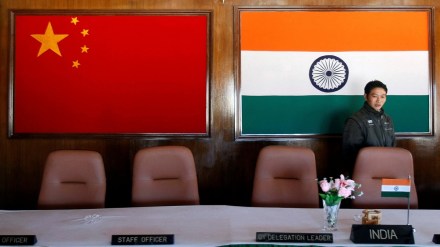At a time when the global economic order is being disrupted, India must nurture relationships with all the rising powers in an increasingly multi-polar world. Its relations with China — the second largest economy in the world — are passing through a testy phase. India has so far engaged in a delicate balancing act of aligning with the US while bolstering strategic relationships with Russia and other middle powers who punch above their weight in global affairs. As the dynamics between the US, Russia, and China are in flux, there is a warrant for India to create strategic space for an entente cordiale with the dragon. India’s policy choices in this regard are no doubt complicated by the continuing face-off on the Sino-Indian border since April 2020. It is not business as usual for the bilateral relationship unless there is peace and tranquillity on the border. China’s foreign minister Wang Yi recently stated that a ballet between the elephant and dragon is the only “right choice” for bilateral relations, adding that “we should never allow bilateral relations to be defined by the boundary question”.
In this regard, the good news of late is the de-escalation and disengagement in eastern Ladakh with arrangements for border patrolling by both India and China. This augurs well for further negotiations to resolve the long-standing territorial dispute. The ultimate goal is to have de-induction as the presence of a large number of troops on the border is not conducive for normalising Sino-Indian relations. The easing of the border stand-off is doubtless due to the strategic guidance for the improvement of bilateral ties when Prime Minister Narendra Modi and China’s President Xi Jinping met on the sidelines of the BRICS summit in Kazan last October. Significant steps have been taken like resumption of the Kailash Mansarovar pilgrimage this year. Discussions are on for restoring direct flights and streamlining of visa procedures for journalists and think-tanks. Both sides have initiated discussions on sharing data related to trans-border rivers. The foreign secretary was recently asked pointed questions on China’s dam on the Brahmaputra by the parliamentary standing committee on external affairs.
At a time of geo-economic disruption, there is no doubt that the coming together of two great neighbours — two ancient civilisations — represents an international public good; that it is a strategic necessity to work together. As fast-rising powers, both have a role in contributing to global growth and espousing the interests of the Global South. China and India have complementarities: the dragon has vast amounts of capital that can help realise India’s ambitions to become a more prosperous nation by investing in its $1.4-trillion national infrastructure pipeline. China has dominance over global supply chains. If India can plug into these chains with its advantages of an abundant supply of young labour at highly competitive wage rates, it can export more and grow faster over the medium term.
However, the possibilities of cooperation that Wang advocates exist only if the two Asian powers perceive themselves as equals, which they are not. The gap in economic power between the two has widened. India is the world’s fastest-growing economy but China’s per capita income is five times larger. In this milieu, China sees India only as a weaker neighbour. A dance between the elephant and the dragon will indeed be the appropriate policy choice when the relative economic power differential narrows over time.
